
Freemasonry or Masonry refers to fraternal organisations that trace their origins to the local guilds of stonemasons that, from the end of the 13th century, regulated the qualifications of stonemasons and their interaction with authorities and clients. Modern Freemasonry broadly consists of two main recognition groups:

A Masonic lodge, often termed a private lodge or constituent lodge, is the basic organisational unit of Freemasonry. It is also commonly used as a term for a building in which such a unit meets. Every new lodge must be warranted or chartered by a Grand Lodge, but is subject to its direction only in enforcing the published constitution of the jurisdiction. By exception the three surviving lodges that formed the world's first known grand lodge in London have the unique privilege to operate as time immemorial, i.e., without such warrant; only one other lodge operates without a warrant – the Grand Stewards' Lodge in London, although it is not also entitled to the "time immemorial" title. A Freemason is generally entitled to visit any lodge in any jurisdiction in amity with his own. In some jurisdictions this privilege is restricted to Master Masons. He is first usually required to check, and certify, the regularity of the relationship of the Lodge – and be able to satisfy that Lodge of his regularity of membership. Freemasons gather together as a Lodge to work the three basic Degrees of Entered Apprentice, Fellowcraft, and Master Mason.
The history of Freemasonry encompasses the origins, evolution and defining events of the fraternal organisation known as Freemasonry. It covers three phases. Firstly, the emergence of organised lodges of operative masons during the Middle Ages, then the admission of lay members as "accepted" or "speculative" masons, and finally the evolution of purely speculative lodges, and the emergence of Grand Lodges to govern them. The watershed in this process is generally taken to be the formation of the first Grand Lodge in London in 1717. The two difficulties facing historians are the paucity of written material, even down to the 19th century, and the misinformation generated by masons and non-masons alike from the earliest years.
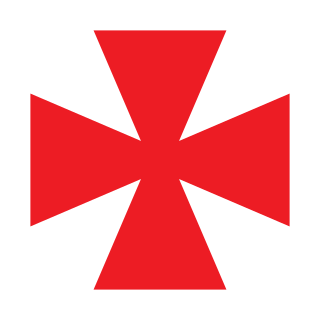
The Swedish Rite is a variation or Rite of Freemasonry that is common in Scandinavian countries and to a limited extent in Germany. It is different from other branches of Freemasonry in that, rather than having the three self-contained foundation degrees and seemingly-endless side degrees and appendant bodies, it has an integrated system with ten degrees. It is also different in that, rather than moving through the offices or 'chairs', progress in the Swedish Rite is based on moving through the ten degrees. A fundamental difference is the Swedish Rite's position on religious affiliation: Anglo/American 'Regular' Masonry requires a belief in any theistic religion and Continental 'Liberal' Masonry does not require belief in any religion, whereas Swedish Masonry is specifically Christian, and requires a Christian trinitarian belief in all its members. Nonetheless, the main Swedish Rite constitutions are all recognised as regular by the United Grand Lodge of England, and stand in full amity.

The Royal Order of Charles XIII is a Swedish order of merit, founded by King Charles XIII in 1811.

Freemasonry in Malta has a lengthy history dating from the eighteenth century. The main masonic influences have been from the United Grand Lodge of England, the Grand Lodge of Scotland, and the Grand Lodge of Ireland. Today Regular Freemasonry is under the jurisdiction of the Sovereign Grand Lodge of Malta, formed in 2004.
Freemasonry in Sweden was introduced by the Swedish Order of Freemasons, founded in 1735 as the oldest still active Swedish fraternal order, working the Swedish Rite of Freemasonry. It is under royal patronage of the King of Sweden and closely associated with the Lutheran Church of Sweden. It is a jurisdiction that admits Christian men only, and is recognised by the United Grand Lodge of England as a Regular Masonic jurisdiction, being the only Regular Grand Lodge that admits a 34th informal Masonic Degree. Its total membership is about 16,500.
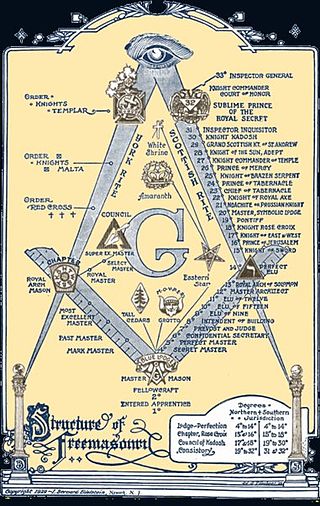
There are many organisations and orders which form part of the widespread fraternity of Freemasonry, each having its own structure and terminology. Collectively these may be referred to as Masonic bodies, Masonic orders or appendant bodies of Freemasonry.

The Norwegian Order of Freemasons is the Masonic Grand Lodge in Norway. The first lodge was opened in 1749 and is still working. The Grand Lodge has followed the Swedish Rite since 1818, which requires its members to adhere to Christianity. During the union of Sweden-Norway, the Swedish-Norwegian king was Grand Master of the Order. The sovereign Grand Lodge of Norway was consecrated in 1891. As of 2009, the Order has about 20,000 members.
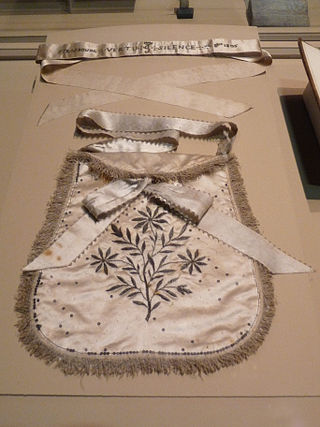
Freemasonry has had a complex relationship with women, which can be readily divided into many phases with no demonstrable relationship to each other until the 20th century. A few women were involved in Freemasonry before the 18th century; however the first printed constitutions of the Premier Grand Lodge of England appeared to bar them from the Craft forever.
Freemasonry in Denmark was first established in 1743 and is today represented by a number of Grand Lodges. The oldest and biggest Masonic Grand Lodge in Denmark is the Danish Order of Freemasons, in English also known as the Grand Lodge of Denmark.

The Rectified Scottish Rite, also known as Order of Knights Beneficent of the Holy City or Knights Benefactor of the Holy City is a Christian Masonic rite founded in Lyon (France) in 1778.

Lodge St. Olaus to the white leopard is a Freemasonic Lodge within the Norwegian Order of Freemasons. It was established on June 24, 1749, on the island of Ladegaard, in the building of Bygdøy Kongsgaard in Christiania. The original name of the lodge was St. Olai, and it was named after the Norwegian king Olaf the Holy one. In 1780 the lodge changed its name to Saint Olaus to the white leopard.
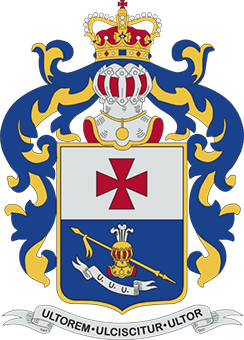
The Danish Order of Freemasons, in English also known as the Grand Lodge of Denmark, is a governing body of some Masonic Lodges in Denmark. The Danish Order of Freemasons was founded on 16 November 1858.

The Grand Landlodge of the Freemasons of Germany, also: Order of Freemasons is a Masonic Grand Lodge in Germany. It is one of the founding members of the United Grand Lodges of Germany and as such it is one of the five German Grand Lodges recognized as "regular" Grand Lodges by the United Grand Lodge of England (UGLE). The Grand Lodge was established in 1770 by Johann Wilhelm Kellner von Zinnendorf, a Prussian army physician. It is one of three so called Old Prussian Grand Lodges.

The Swedish Order of Freemasons is a Swedish fraternal order of freemasonry, founded in 1735 as the oldest still active Swedish fraternal order. It is the native Swedish manifestation of Swedish Rite Freemasonry, recognised by the United Grand Lodge of England as a Regular Masonic jurisdictions. The total membership is 16,500.
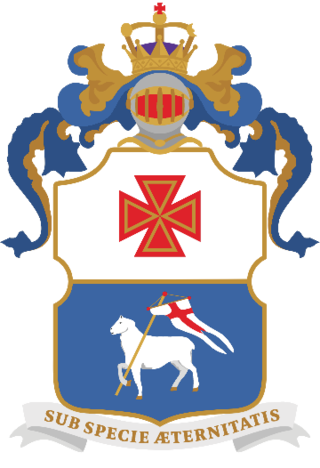
The Icelandic Order of Freemasons, in English also known as the Grand Lodge of Iceland, is the governing body of regular Freemasonry in Iceland.










